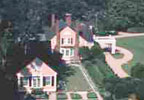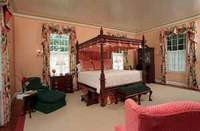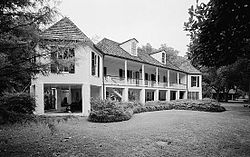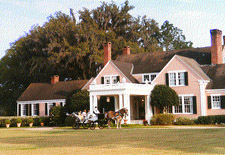Melhana, later Melrose Plantation
Melrose Plantation as it was first called, was originally composed of 7,500 acres of land, acquired in 250-acre tracts between 1825 and 1839 by Paul Coalson, an attorney from Pulaski County. When Paul Coalson died in 1830, his widow married Henry Wyche, who made substantial improvements to the original log house. It was offered for sale in 1857 and contained 1,500 acres, 600 of which were in cultivation. Also mentioned was a gin house and screw, a good comfortable dwelling, and a variety of fruits, such as peaches, apples, figs, pears, and plenty of good water. The property remained in the Wyche family until 1862, when it was sold to William R. G. Gignilliat, a rice planter. During the War Between the States, the Confederate government seized 10,000 bushels of corn and 191 pounds of bacon. Gignilliat owned it until after the war when he sold it to Dr. Samuel John Jones in 1869. When Jones died in 1889, his widow, Lizzie Jones, sold the plantation to Charles M. Chapin of New Jersey. Chapin was a son of Salome M. Hanna and George W. Chapain, and that is probably how it got the name of Melhana. Salome's second husband was J. Wyman Jones and they owned a considerable estate in Thomas County, donating the land which became Glen Arven Country Club. In 1896, Howard Melville Hanna, a Standard Oil executive and wealthy businessman, purchased the plantation and named it Melrose Plantation. For many years the plantation remained in the Hanna family.






